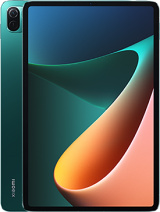Xiaomi Mi 11 Teardown! - Lets find that battery... By JerryRigEverything
So I'm a huge fan of this Xiaomi Mi 11 color scheme. It's got the subtle glow you'd get by lighting a robin's egg on fire. It seems like only cheaper phones get the cool colors these days. We're going to take apart this new Xiaomi Mi 11 and see what that 50 watt wireless charging looks like from the inside. Let's get started. Once again, in order to get inside of this glass backed smartphone we have to break out the heat gun.
The Mi 11 does not have an official IP rating, but it is still glued together pretty tight. The hotter the phone gets the easier it is to remove the glass. There's a little sweet spot where the adhesive gets loose. It's right there between being barely too hot to touch and the battery exploding. With a little upward pulling motion on my suction cup, I can slip my pry tool and razor blade in to slice away that soft adhesive.
And then as you can see, with a little more heat, the back can literally pull right off. With the panel gone we get our first look at that wireless charging pad. It's only got one large copper circle. I was curious to see if there might have been multiple since 50 watts of wireless is pretty extreme. We'll get a closer look in a second.
There are 9 screws holding down the top plastics and camera lens. These screws are all tinted green except for the ones around that camera. These are different sizes so I'll keep them separate and organized, because like always, it's nice when the phones survive the teardown and I can get it all put back together. With the camera lens unplugged we can see that it's actually made from metal underneath - cnc'd aluminum. We can tell by the machining marks on the back, and underneath the glass layer on top it's got a dual colored LED flash.
Next I can lift off the wireless charging coil and the NFC pad. It's impressive that this guy can handle 50 watts of wireless charging and 10 watts of reverse wireless. Most phones can only do about half of that. We can see little strands of copper inside that generate the magnetic field that allows it to send and receive power. I'll unplug the two battery connections and the two extension ribbons – all unclipping like little Legos.
I was curious to see how Xiaomi can manage all of the power coming into this phone, and it looks like the battery is indeed divided into two separate parts. Adhesive under the battery is also pretty chill. Nice work, Xiaomi. Thumbs up for that. And even though it appears to be one solid battery, it's still got the two plugs, which makes me think that all the charging juice is being divided between two cells.
And since it's like two batteries being charged at the same time, it charges faster, pulling double the normal power. It's cool to see what solutions different companies come up with. A Tesla, for example, has about 6,000 batteries and can absorb power pretty fast when all charge at the same time. The bottom speaker is held in place with 7 screws. Still the same little green guys.
I'll link the toolkit I”m using in the video description. With the wires unplugged from the speaker, it comes free from the phone and we can check it for balls. And indeed, underneath the little sticker are thousands of foam sound dampening balls. These help the speaker sound bigger than it actually is. The balls give the speaker more surface area inside for the sound to resonate off of.
There's also waterproofing on the speaker unit itself. Kind of fun. I'll remove the dual SIM card tray, along with both extension ribbons. And then we have access to the charging port board with it's white water damage indicator near the USB-C port, which also has a black rubber ring around the opening. That black rubber though isn't the only water protection.
Down here by the square vibrator and the speaker opening we get another waterproof mesh with it's own rubber seal. The Mi 11 might not have an official IP rating, but it still does have protection against water. Let's move up to the top of the phone so we can check out the cameras. The front facing hole punch camera can pop out of the phone. It's 20 megapixels and does not have any optical image stabilization, which is pretty normal.
I'll unplug the other two smaller cameras on the back and remove one remaining screw holding the motherboard down. Then that board can lift up and out of the phone exposing the liquid cooling vapor chamber that Xiaomi mentioned, and also quite a bit more copper on the back side of the board. From here I can unplug the large 108 megapixel camera sensor and we get access to all three rear cameras. The bottom ultra wide 13 megapixel sensor does not have OIS, but the large 108 megapixel sensor in the center does. The optical image stabilization is pretty important on a main camera.
Then we have the 5 megapixel macro camera off to the side which does not have OIS. With the front screen having super small bezels, the proximity sensor, which is the little guy that turns off the screen when it's next to your face, is hidden under the display, just like an optical fingerprint scanner. And it sits there right next to the earpiece speaker. Finally, let's get a look at this liquid cooling or the vapor chamber. Basically these have some form of liquid or gas inside that helps facilitate the transfer of heat.
The hot gas or liquid inside gets pushed away from the hot processor, then a thin mesh wicks it back to the center after it cools down so it can repeat the cooling process. Sometimes we can visibly see liquid droplets inside of this vapor chamber, but not this time around. Depending on the gas used, it could have evaporated instantly when it's cut open so I'm not too worried. Plus, copper would do a good job conducting heat all by itself. The underscreen fingerprint scanner is tucked between the frame and the screen, which means it probably does not have a lens and might be why it wasn't the best at reading my fingerprint after I scratched it.
It's just a flat sensor doing all of the work. In order for us to see it though, I would have to destroy the screen. And since the screen is the best part of the phone, we're just going to leave it in peace. Overall, I like what I see. Xiaomi made a beast of a phone and slapped a fair price on top.
I'm still not totally sure if they're allowed in the USA at the moment. Our government has been erratic for quite some time. But things will start settling down soon. With the battery back in place and both of its connectors plugged in, I can get the wireless charging pad back on top, along with the aluminum camera housing and all of the screws that hold the whole thing together. It's time to see if the Mi 11 survived the teardown, and indeed it has.
Let's hope 2021 is the year of normal price cell phones again. I think that would be a win for everyone. Another win for everyone would be hitting that subscribe button if you haven't already, and come hang out with me on Instagram and Twitter. Thanks a ton for watching. I'll see you around.
Source : JerryRigEverything










































